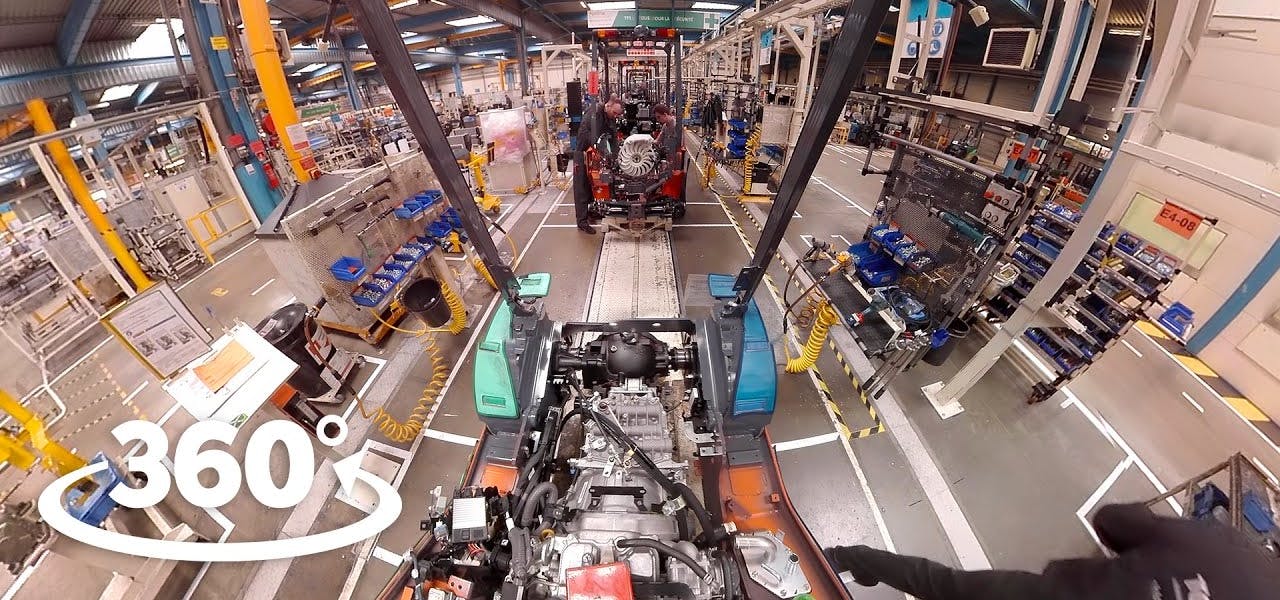What types of VR training are there?

What types of VR training are there?
VR training can be realised in different forms. The target group, the subject and the learning objectives influence the choice of form. For example, a 360-degree video training without interaction can be chosen. Or, on the contrary, a fully interactive training in a 3D environment. What are the differences between these training courses? Which training works best for you? And what are the pros and cons? In this blog post, we cover the three most common forms of training: 360 degrees, hotspot and interactive.
360 degrees video VR training
The name says it all: in this category, training is presented in the form of a video. Often these are recorded in 360 degrees, so you can see completely around you. These videos can be viewed on a computer, phone and on VR glasses. This means VR glasses are not a requirement. That makes this form of training very flexible and easily deployable on multiple devices.
However, the added value of VR glasses is worth considering. With VR glasses on, you look around naturally by moving your head. This allows you to see different sides of the video. There are also limitations to this form of training. A video is not interactive. So it is a passive form of training. The trainee only watches, and does not perform actions himself. In addition, less depth can be seen, making it more difficult to estimate the size of machines or the distance between parts, for example. Because of these limitations, this form of training is the cheapest to develop and use.
+ Easy and quick to deploy
+ VR glasses not required
- Not interactive
- Little spatial feeling
Developmentcosts: low
Use costs: low

Hotspot VR training
A hotspot VR training uses the same 360-degree video technology as the training form mentioned above. Here, limited interactivity is added in the form of hotspots. Hotspots are locations in the video where, on top of the video, additional information is displayed. For example, if the trainee is looking at a machine part, the name of the part can be displayed here. So these are often graphic elements that are added to the video recording. The most commonly used interactivity is clicking on hotspots. After clicking, it can be linked to a website or even another 360 video. This way, you can navigate to the next part in the training.
Although this form of training does allow interactivity, it is very limited. The trainee does not perform any actions. The user can navigate in a limited way. In a hotspot training the focus is displaying information by transferring it in a passive way. The development costs are not much higher than that of 360-degree video training.
+ Targeted display of information on top of a 360 degrees video
+ VR glasses not required
- Limited interactivity
- Little spatial feel
Developmentcosts: low to average
Use costs: low

Interactiv VR training
Interactiv VR training is the most advanced form of training in virtual reality. Instead of a video, a full 3D environment is displayed. Trainees walk around in this virtual environment and perform practical actions. The 3D environment can be an exact copy of reality, which enhances the realism of the training. The trainees perform actions in this environment, that they also do in reality. In addition, the consequences of the actions can also be accurately simulated. For instance, trainees see and experience the consequence of placing the wrong part, or emergency situations can be simulated. Just like a pilot is trained in a flight simulator. This ensures that people learn much faster**, because they actually perform the actions before going to work in practice.
This makes interactive VR training more complex to implement than a 360-degree video VR training or a hotspot VR training.
The level of investment in an interactive VR training depends on whether it is purchased on a licence basis or developed on a customised basis. A licence-based interactive VR training can be purchased for as little as € 20,- per person per training. For a customised interactive VR training, the investment depends on the complexity of the training and is usually higher than the other 2 VR training types. In the case of an interactive VR training, the 3D working environment is digitally created entirely by hand. Programmers then ensure that the environment, machines and equipment respond realistically to the trainees' actions. After development, however, the training can be repeated with minimal cost.
+ Fully interactiv
+ Simulating of consequences
+ Actions executable as in reality
Developmentcosts: low (licence based) / high (customised)
Use costs: low
** the retention value of doing actions is 60% higher, than watching the same actions in a video.


